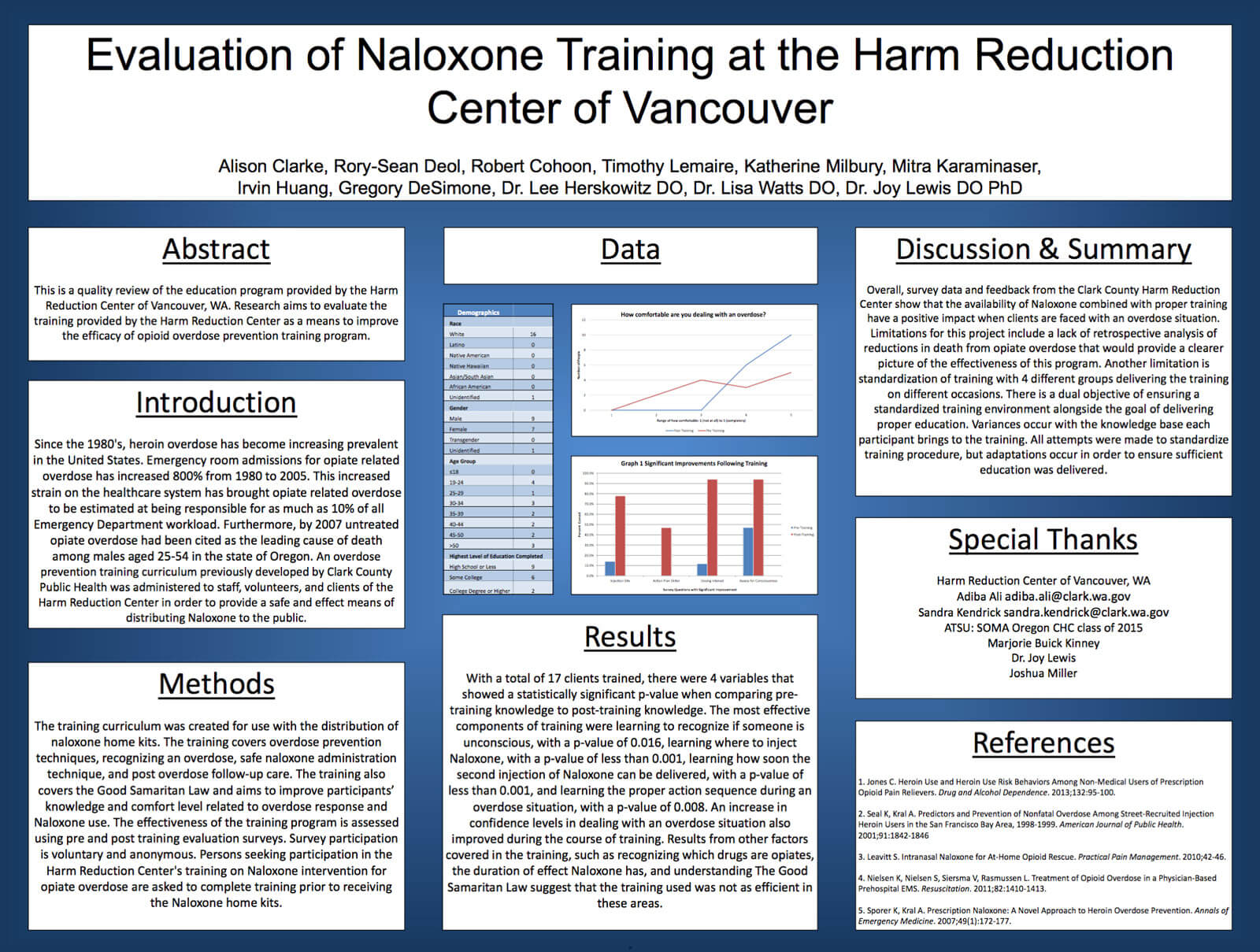Self-efficacy and Harm Reduction Among
Intravenous Drug Users Who Received Naloxone Training
Effective Training on Naloxone Intervention for Opiate Overdose
Adaptable. Responsive. Equipped with the skills needed to succeed in the future healthcare environment. These are qualities that SOMA graduates learn to apply throughout their careers to meet patient needs in a dynamically changing healthcare environment.
The “1+3” medical school model itself is an example of adaptability that prepares the osteopathic doctors of tomorrow. During the first year, didactic coursework is supplemented with a variety of other innovative methods, such as patient interactions, simulations, medical skills and osteopathic manipulative medicine. The next three years are spent practicing in community clinics, developing a broader understanding of public healthcare through direct interaction with patients.
In this way, SOMA graduates benefit from both traditional learning and an alternative approach that enables them to keep their “pulse” on the healthcare community as it evolves.
Purpose
The rate of opiate-related overdose deaths has been steadily increasing in the state of Washington. This project is a quality review of an overdose education program provided to the Harm Reduction Center of Vancouver, WA staff and clients. We provide training related to overdose identification, appropriate response, and Naloxone use.
Steps for Implementation
An overdose prevention training curriculum previously developed by Clark County Public Health was administered to staff, volunteers, and clients of the Harm Reduction Center. The training curriculum was created for use with the distribution of naloxone home kits. The training covers overdose prevention techniques, recognizing an overdose, safe naloxone administration technique, and post overdose follow-up and care. The training also covers the Good Samaritan Law and aims to improve participants’ knowledge and comfort level related to overdose response and Naloxone use. The effectiveness of the training program is assessed using pre and post training evaluation surveys.
Benchmarks for Monitoring Results
Survey participation is voluntary and anonymous. Persons seeking participation in the Harm Reduction Center’s training on Naloxone intervention are asked to complete training prior to receiving the Naloxone home kits. Thus far, we have trained twenty-two participants. Fourteen were volunteers at the harm reduction center and eight were clients. After receiving training seven participants indicated an increase in level of comfort injecting Naloxone, one participant is more likely to call 911 in the event of an overdose, seven learned that proper injection of naloxone is not directly into the heart, and twelve felt more prepared to deal with an overdose.
Conclusions on Replicating this in Other Health Centers
Preliminary data suggest our training program is effective in improving understanding for the proper use of naloxone and increasing confidence levels in dealing with an overdose situation. This project allows the Harm Reduction Center to continue its work to protect the community by providing on-going training. Future participation will allow for expanding training to police officers and community organizations. Other Community Health Centers may wish to replicate this program. Obtaining Naloxone to distribute is a challenge which could influence the ability of CHCs to provide this service.
Limitations
Limitations for this project include a lack of retrospective analysis of reductions in death from opiate overdose that would provide a clearer picture of the effectiveness of this program. Another limitation is standardization of training with 4 different groups delivering the training on different occasions. There is a dual objective of ensuring a standardized training environment alongside the goal of delivering proper education. Variances occur with the knowledge base each participant brings to the training. All attempts were made to standardize training procedure, but adaptations occur in order to ensure sufficient education was delivered.
